Clancy Tucker's Blog, page 129
January 10, 2019
11 January 2019 - WEIRD AND WACKY STUFF

WEIRD AND WACKY STUFF
G'day folks,
Hey, check out these weird pictures.
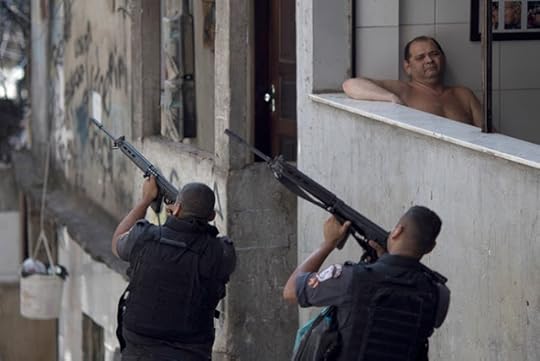


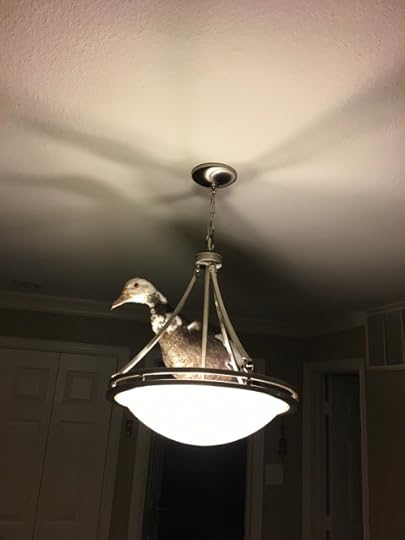
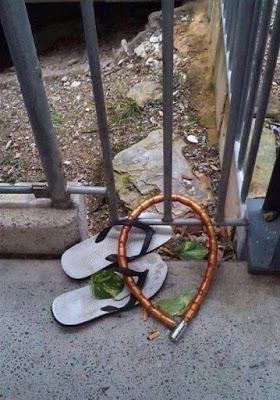




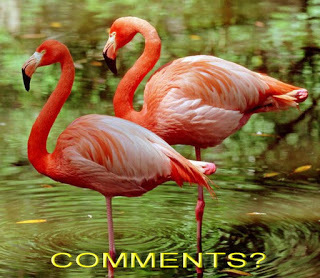
Clancy's comment: Salami on the steering wheel, eh? Doesn't everyone do that?
I'm ...


Published on January 10, 2019 12:18
January 9, 2019
10 January 2019 - INTERESTING ANATOMY MUSEUM IN NAPLES
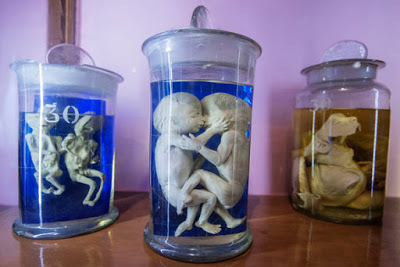
INTERESTING ANATOMY MUSEUM IN NAPLES
G'day folks, MUSA (Museo Universitario delle Scienze e delle Arti, or the University Museum of Arts and Sciences) celebrates the marvels of the human form, inside and out at the historic Anatomy Museum. Science and art intersect to display all manners of human curiosities, medical marvels, and some dark Italian history.
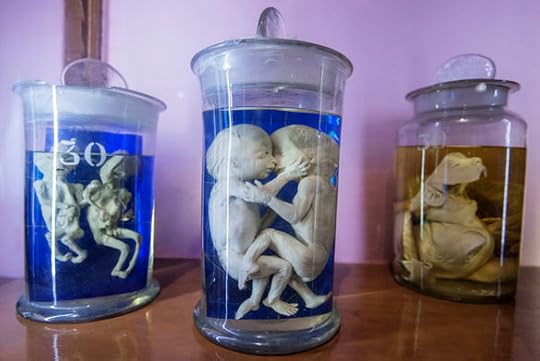
Naples houses one of Italy’s most eccentric anatomy museums, with ancient Roman medical tools, the skulls of victims who died when Mount Vesuvius erupted in Pompeii in the year 79 A.D., anatomical sculptures made from wax, and mutated specimens preserved in formaldehyde within its expansive holdings.
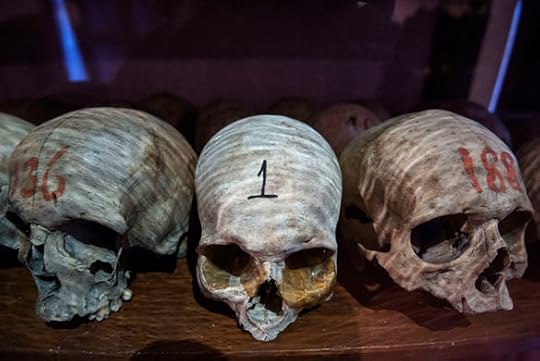
The MUSA Anatomy Museum is a site of convergence for art, history, and education. Learn about the processes of cremation and fossilization; the evolution of medical equipment and the modernization of Neapolitan hospitals; and the cultivation of studies in physiology and pharmacology.

After years of neglect, the Anatomy Museum (then referred to as the Anatomy Museum of the University of Campania Luigi Vanvitelli) reopened to the public in 1997. In 2012, a rebrand re-presented the museum as part of the Museum of Arts and Sciences. A new museum director and a committee board transformed the space into an educational resource and concept museum that exhibits the university’s vast collection while delving into Italian medical history.

Clancy's comment: This would not appeal to everyone, but I'd find it very interesting.
I'm ...
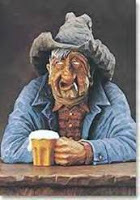
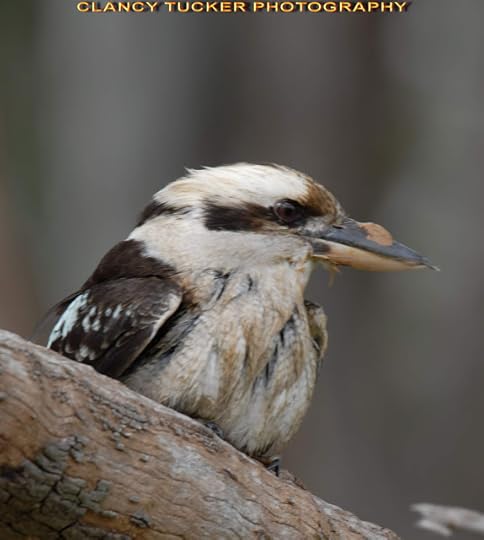
Published on January 09, 2019 12:01
January 8, 2019
9 January 2019 - Anna Maria Espsäter - Guest Independent multilingual writer
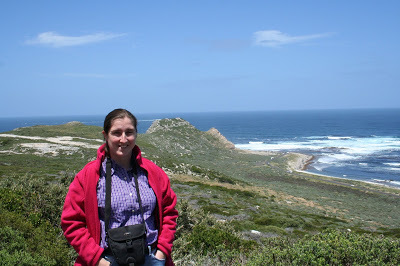
Anna Maria Espsäter - Guest Independent Multilingual Writer -
G'day folks,
Today, I interview a very interesting and talented writer. Our interview is reasonably long but certainly worth reading.
Welcome, Anna Maria ...
1. TELL US A LITTLE ABOUT YOURSELF AND YOUR WRITING JOURNEY.
I grew up in rural Sweden and left as soon as it was legally possible, after finishing high school. My parents moved around a lot and I attended six different schools, all in small, rural communities, where I quickly developed “that outsider feeling” – something that’s proved useful later in life as a writer.
Writing was always a solace and an escapism for me. I’ve kept a diary since age 11 and from a young age I also started writing in English. But the journey to become a writer was long and winding… It was only after getting a diploma in tourism, a BA in Spanish and Latin American studies and trying multiple different jobs in the Netherlands, Mexico and the UK, where I’m based since my 20s, that I finally took the plunge and did what I’d always wanted to do for a living – write.
2. WHEN AND HOW DID YOU BECOME A WRITER?
By the time I was 35, I was holding down two full-time jobs – one office-based doing admin work, one from home as a freelance translator – and unsurprisingly, after six months of this, I was feeling completely worn out. I decided to give up my office job and focus on translation, but as fate would have it, shortly afterwards I lost my freelance contract (probably because I was a crap translator) and went from two jobs to none in the space of two months.
What to do?
I had a holiday booked to Cuba and despite not having a job to return to, I decided to go anyway, I was that desperate for a break. Cuba was fantastic, and I returned full of energy and enthusiasm. That’s when I, by chance, met the editor of a recently launched travel magazine and on the spur of the moment, approached him with an idea for a travel feature, explaining that I had never been published before. He didn’t mind and liked my feature idea. It was published in the next issue, all of five pages, with both my writing and my photography. I was blown away and thought “hey, I can do this” and then I just did.
That first feature, back in 2006, gave me the confidence boost I didn’t even realise I’d needed and then there was no stopping me. Over the next decade I travelled all over the world on 70+ research and press trips, writing features, but also working on over 20 books (mostly guidebooks, but also travel anthologies and culinary travel books). Looking back, I realise I was incredibly lucky – especially now that I’m working towards breaking into fiction. Not only did I get my first attempt at a feature published, I also got a book contract after approaching only one publisher, Footprint Travel Guides, with whom I’ve collaborated on multiple titles (https://www.footprinttravelguides.com/).
The last three-four years, my writing has shifted focus and I’ve written a creative non-fiction book about cats, published by Summersdale, as well as finding my feet writing fiction (https://summersdale.com/). To date I have two novels, a collection of short stories, and poems (in English and Swedish) completed. I’m in the process of determining whether to self-publish or go down the route of traditional publishing again. Although I mostly write in English, I also write in Swedish and Spanish.
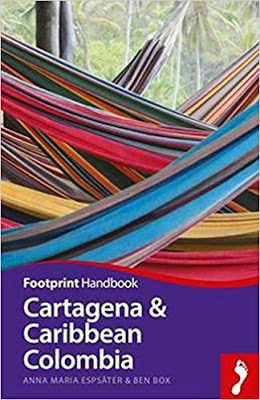
3. WHAT TYPE OF PREPARATION DO YOU DO FOR A MANUSCRIPT? DO YOU PLAN EVERYTHING FIRST OR JUST SHOOT FROM THE HIP?
When working on a travel book, I usually have to plan everything well in advance. Depending on the destination and how well I know it, I read quite widely beforehand, then there’s the in-situ research trip, lasting 6-8 weeks, followed by the actual writing. The schedule is worked out in advance together with the publisher.
Perhaps because the travel books are so well-planned, I very much enjoy the opposite approach to my fiction and never plan anything at all in terms of my stories – it’s fun just seeing what materialises. This does make the editing stage longer, but it’s worth it.
4. WHAT DO YOU ENJOY MOST ABOUT BEING A WRITER?
All of it really – I can’t see myself being anything else. The freedom of working for myself, choosing my own rhythm and schedule, was always very appealing and having worked for myself these last 13 years, I still love it. In terms of the travel writing, the obvious draw is the chance to travel, meet interesting people, go on adventures and get paid for it, whereas with fiction, it’s wonderful not to have to “stick to the facts” as a writer and invent people and places as I please.
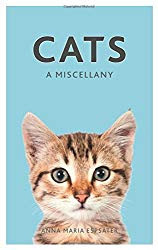
5. WHAT IS THE HARDEST THING ABOUT BEING A WRITER?
Most of the time I enjoy all aspects of being a writer, so that’s quite a tough question. It can get a bit lonely at times and it can be hard to keep up motivation and self-discipline, when working for oneself.
6. WHAT WERE YOU IN A PAST LIFE, BEFORE YOU BECAME A WRITER?
Before I started writing full-time, I spent 8 years working in the travel industry. I was an English teacher in Mexico for two years and have also done translation, nursing, child-minding, general office-based work, been a shop assistant and various other things, but I was always writing.
7. WHAT IS YOUR GREATEST WRITING ACHIEVEMENT?
Although I’ve written a lot since, the very first feature I had published, focusing on Cuba, still stands out as one of my best-flowing pieces of writing. Also, my first travel story to appear in an anthology, entitled My Man in Myanmar, is one of my favourites (published by Simulacrum Press 2008). Mostly though, to be able to get up every morning and write, creating stories, feels like an achievement that I am very happy with.

8. WHAT ARE YOU WORKING ON AT THE MOMENT?
Quite a mixture of things. I still do travel writing as it’s fun and pays (some of) the bills. Recently I visited Latvia for the country’s centenary and aim to pen some features with a mixed travel and literature focus (www.latvianliterature.lv).I’ve also just started working on a new idea for a children’s book, my first in Swedish. Furthermore, I give travel and adventure talks, and write about winter sports, so I’m plotting a few trips for the upcoming ski season,
9. WHAT INSPIRES YOU?
Journeys, people, nature, solitude, good conversations, bourbon (if I’m blatantly honest), interesting and unusual names (I have 15-page Word document with names gathered from around the world, and I’m aiming to sneak as many as possible into my fiction stories) and many other things.
10. WHAT GENRE DO YOU WRITE?
Initially travel and food books, as well as creative non-fiction.
More recently young adult fiction, fantasy/horror and poetry.
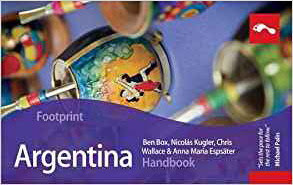
11. DO YOU HAVE ANY TIPS FOR NEW WRITERS?
In terms of fiction, I’m a new writer myself, but for aspiring travel writers, particularly guidebook writers, here’s a blog I wrote in 2014 with some tips:
Getting into guidebook writing
Travel writing can be notoriously difficult to get into, but there is one sub-genre that encourages and relies upon more unknown freelance writers than perhaps any other: guidebook writing.
You could just pack your bags, head off exploring, then contact publishers and hope for the best, but there are other ways. Here are some things to consider before taking the leap into guidebook writing.
1. Is this really the job for me?
First of all, although this might sound obvious, find out what the job involves on a day-to-day basis, from pre-trip planning and destination research, to putting together the finished book. Chat to writers who have first-hand experience and ask lots of questions before deciding to contact publishers yourself. Forget glamorous and hedonistic journeys to exotic locations – instead think hard, often solitary, but interesting, work. If you love working independently, you’re disciplined, adventurous, calm in a crisis, multi-lingual (it helps) and ready to try anything once, this might be the job for you.
2. Research publishers
Once you’re ready to go for it, do your homework. Familiarise yourself with the different publishers out there and decide which ones to approach. Then it’s your task to prove to them why you would be the right person to write for them. When I first contacted a publisher about their forthcoming titles, I simply chose the one I knew best from using their guidebooks on my own journeys as a regular traveller. This was a definite advantage when I got the job, as I was already familiar with style, layout, maps etc, and it was a good selling point before I got a contract.
3. The right writer for the right place
After choosing which publisher(s) to approach, you need to prove you’re the very writer they’ve been looking for. To be blunt, in order to write like an expert, you need to know your stuff and, more importantly, convey this to the publisher, or you’ll be hard pushed to persuade them to hire you, not to mention all the extra work you’re giving yourself by choosing somewhere less well-known to you. Aim for a destination you’ve lived in or travelled extensively around, where you speak the language, have some contacts and can easily find your way around.
4. Improve your chances
After choosing publishers and destination, check what books are already published, and most crucially, the publishing dates. If a guide to the destination of your interest was published recently, there won’t be a need for a new edition yet. Check if the publisher has any specialist geographical areas or cities and choose a publisher to match your own such areas of expertise. If they already cover the destination, they may have a regular author who updates it, so bear that in mind, but don’t be put off – guidebook writing is a changeable business with opportunities cropping up regularly.
5. Take stock of your skills and get mailing
It helps if you’ve been published before, but this isn’t crucial. Bear in mind guidebook writing is quite a far cry from creative writing pursuits. An engaging writing style is a plus, but it’s even more important to be informative and accurate. Decide on your destination, research your favourite guidebook publishers and then you’re ready to drop them an email expressing an interest in writing for them, explaining why you’re the right person for the job. Finally, be patient, publishers can take a while to get back to you and contacting several will increase your chances.
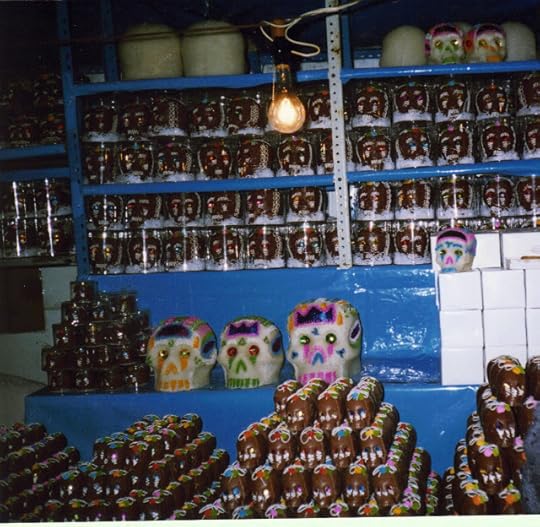
12. DO YOU SUFFER FROM WRITER’S BLOCK?
Thus far, not so much. Or if I do, I just do something else for a while, such as work on a travel talk e.g. Luckily, I don’t currently have any tight deadlines, or things would be different of course.
13. DO YOU HAVE A PREFERRED WRITING SCHEDULE?
I tend to get up early and do my best work/writing in the mornings. Unless I’m very busy, I’m quite kind to myself and work maybe 7.30am – 3-4pm. If I’m on a research trip the schedule changes drastically and the working days are much longer.
14. DO YOU HAVE A FAVOURITE WRITING PLACE?
I work from home in London and have an office set up in my flat where I do most of my writing, but I also love writing in different locations. Last year I rented a flat in Swedish Lapland for a couple of months to write and that was heavenly. I’ve also attended a writers’ retreat at Moniack Mhor in Scotland two years running and that is a truly beautiful space to write (https://www.moniackmhor.org.uk/).

15. WHO IS YOUR FAVOURITE AUTHOR AND WHY?
I’m slightly torn between Neil Gaiman and, a rather less well-known, Mexican author called Juan Rulfo. If I have to choose one, then Neil Gaiman strikes me as one of the best modern storytellers I’ve ever come across.
16. WHAT’S THE GREATEST COMPLIMENT YOU EVER RECEIVED FROM A READER?
An acquaintance was going to Argentina and told me she was planning to buy the Footprint Argentina Handbook, asking me if I’d heard of it. I was pleased to tell her I wrote it!
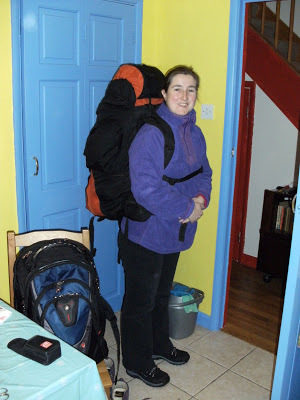
17. WHAT WAS THE WORST COMMENT FROM A READER?
“Your writing is terrible as always.” (Admittedly this was uttered by an ex-partner, about my regular travel feature in a UK magazine, so the opinion was not entirely unbiased.)
18. WRITERS ARE SOMETIMES INFLUENCED BY THINGS THAT HAPPEN IN THEIR OWN LIVES. ARE YOU?
Absolutely! There are many elements of my fiction that are at least semi-autobiographical.
19. OTHER THAN WRITING, WHAT ELSE DO YOU LOVE?
Travelling, it goes without saying, learning languages and meeting new people, cooking and trying dishes from different parts of the world, winter sports, dancing, yoga and hiking, spending time with cats (and one’s snoozing beside me as I type), reading, photography and storytelling.
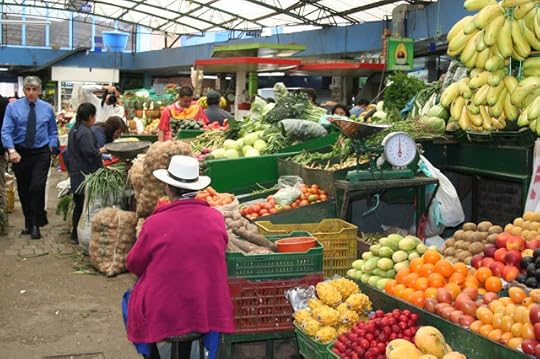
20. DID YOU HAVE YOUR BOOK / BOOKS PROFESSIONALLY EDITED BEFORE PUBLICATION?
Yes, in all cases, as I had publishing contracts that included editing by the publishers.
21. DESCRIBE YOUR PERFECT DAY.
At home:
Cup of tea or coffee (coffee is a recent discovery after my many years in “Tealand” UK)
Talk to cat
Check emails
Write
Swing together something tasty for lunch
Talk more to cat
Walk in the park, UK weather permitting
Write
Chill
On the road:
Wake up, ascertain where I am
Local breakfast (fantastic in e.g. Colombia – great coffee, tasty omelette, wicked fruit juices)
Get my bearings, visit sights and/or hotels/restaurants
Meet local contacts for lunch or dinner
Write up notes
Check out bars
Occasionally miss cat
22. IF YOU WERE STUCK ON A DESERT ISLAND WITH ONE PERSON, WHO WOULD IT BE? WHY?
I think I’m back to Neil Gaiman again – he seems like such a fun guy to hang out with and has some good stories to tell. Or maybe Isabel Allende – we could chat about Latin America and my Spanish would get a good work-out.

23. WHAT WOULD YOU SAY IF YOU HAD THE CHANCE TO SPEAK TO WORLD LEADERS?
Get your shit together, there’s no Planet B. It’s now or never, folks, forget your greed and do what’s right.
24. WHAT ARE YOUR PLANS FOR THE FUTURE?
Short-term: Move forward with my fiction, prepare travel talks for 2019 and plot winter sport trips for this season’s ski writing.
Longer term: Finish the children’s book in Swedish and approach Swedish publishers.
Generally speaking, I’m currently trying to strike a good balance between fiction and travel writing/travel talks. And of course, I’m always planning new journeys…
25. DO YOU SEE YOURSELF IN ANY OF YOUR CHARACTERS?
Yes, particularly in the collection of short stories I finished earlier in the year, not so much in the novels to date.
26. DOES THE PUBLISHING INDUSTRY FRUSTRATE YOU?
Ask me in a year’s time…
27. DID YOU EVER THINK OF QUITTING?
Not yet, but trying to break into fiction is certainly proving harder than breaking into travel writing. Writing is what I love and a writer is who I am, so I don’t suppose quitting is an option really, even if I do other things from time to time.
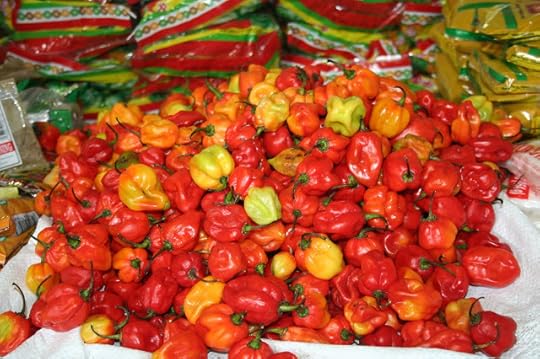
28. WHAT WAS YOUR FAVOURITE MANUSCRIPT TO WRITE? WHY?
Out of the books I’ve been commissioned to work on, I’d say the creative non-fiction cat book I wrote for Summersdale (https://www.amazon.co.uk/Cats-Miscellany-Anna-Maria-Esps%C3%A4ter/dp/1849537356) and Ultimate Food Journeys (https://www.amazon.co.uk/Ultimate-Food-Journeys-Eyewitness-Travel/dp/1405358661),where I wrote the Scandinavia and the South America parts, were the most fun to research and write.
In terms of my fiction, I’m just loving the freedom of all of it!
29. HOW WOULD YOU DEFINE ‘SUCCESS’ AS A WRITER?
Being able to get up every morning and do what you love.
30. WOULD YOU LIKE TO HAVE YOUR BOOKS MADE INTO MOVIES? EVER WRITTEN A SCREENPLAY?
Yes, I’d love that, for sure. I’ve never written a screenplay, but certainly wouldn’t rule it out. I’m open to trying all sorts of different writing. During my first 2-3 years as a travel writer I also did reviews, music features, news, interview features and lots more, but eventually came to the conclusion I had to specialise in order to make a better living.

31. WHAT’S YOUR ULTIMATE DREAM?
Having a good balance between the different strings I have to my bow, spending half the year at home in London and half the year elsewhere, making enough money from my writing with the freedom to branch out and try new genres. Oh yeah, and plenty of time with cats.
32. WRITING IS ONE THING. WHAT ABOUT MARKETING YOU, YOUR BOOKS AND YOUR BRAND? ANY THOUGHTS?
I’ve been lucky, in that so far, the books I’ve written have been traditionally published and the publishers have done all the marketing. Marketing myself is something I need to work on, now that I’m branching out into different genres.

33. ARE YOUR BOOKS SELF-PUBLISHED?
No, although I am considering self-publishing my fiction.
34. DESCRIBE YOURSELF IN FIVE WORDS.
Independent
Adventurous
Open
Honest
Solitary
35. WHAT PISSES YOU OFF MOST?
Lack of communication skills
36. WHAT IS THE TITLE OF THE LAST BOOK YOU READ? GOOD ONE?
The title is “Adolfsfors”. I found it by chance in an antique shop in Sweden this autumn and was astounded to find it was about the village where I spent my teenage years.

37. WHAT WOULD MAKE YOU HAPPIER THAN YOU ARE NOW? CARE TO SHARE?
I’d love to get my fiction published and read, so I suspect that would make me even happier than I am right now.
38. ANYTHING YOU’D LIKE TO ADD?
The writing journey can be solitary and although I like solitude, I’d also be open to hearing from writers, poets or other creatives, from all corners of the world. I can be contacted via my website: www.annamariaespsater.co.uk.


WEBSITE

Clancy's comment: Thank you, Anna Maria. Very interesting and informative. I loved your answer to question 23. Keep writing.
I'm ...


Published on January 08, 2019 11:51
January 7, 2019
8 January 2019 - THE BEAUTY OF THE NETHERLANDS
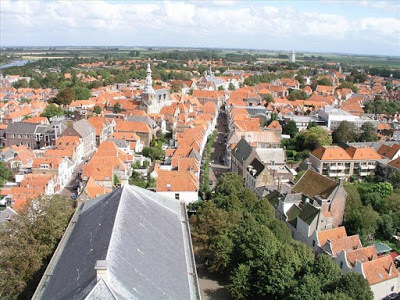
THE BEAUTY OF THE NETHERLANDS
G'day folks,
Welcome to a beautiful country. The Netherlands, a country in northwestern Europe, is known for a flat landscape of canals, tulip fields, windmills and cycling routes. Amsterdam, the capital, is home to the Rijksmuseum, Van Gogh Museum and the house where Jewish diarist Anne Frank hid during WWII. Canalside mansions and a trove of works from artists including Rembrandt and Vermeer remain from the city's 17th-century "Golden Age."
Amsterdam, Rotterdam, The Hague, Eindhoven and even the small village of Giethoorn- who doesn’t know the Netherlands most popular destinations, it is, of course, one of the most beloved countries in Western Europe. However you should know that this country is so much more beautiful when you see more than just its big cities and tourist spots - because the true and authentic Netherlands can be enjoyed only by visiting villages and towns on the outskirts, which offer a wealth of unique beauty that will allow you to get to know the Netherlands Inside out.
Now, let's take a closer look.

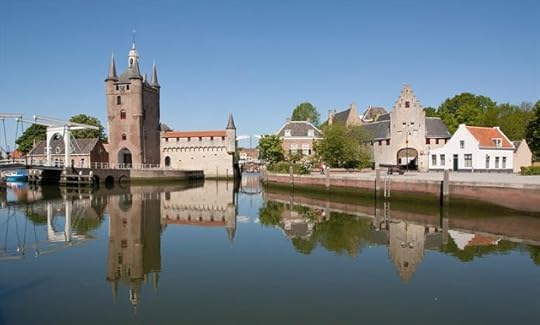

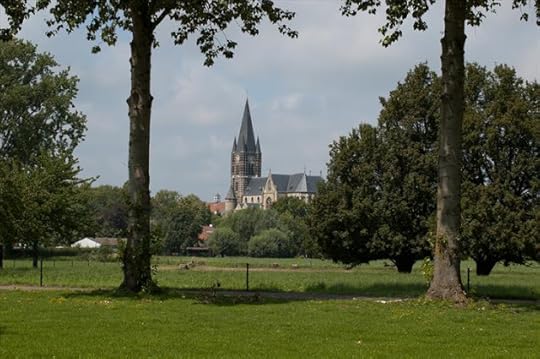
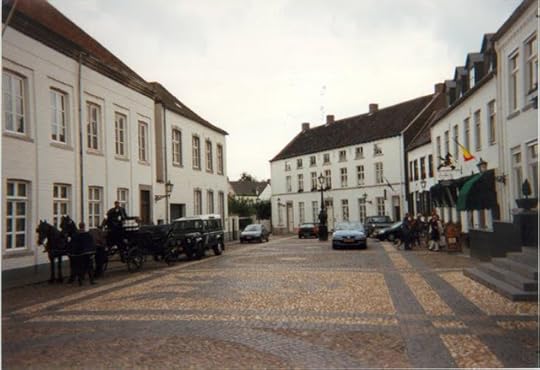



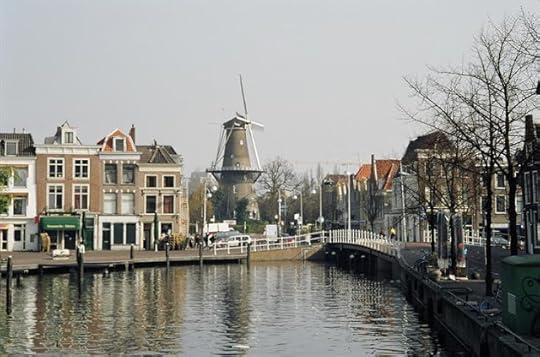

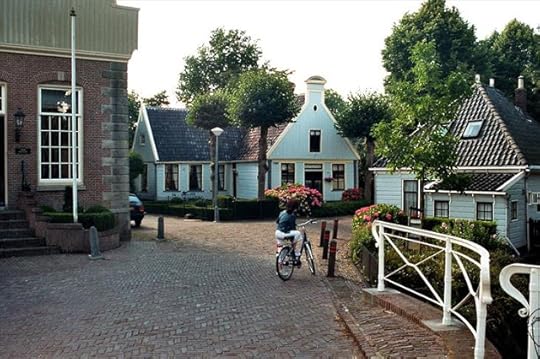

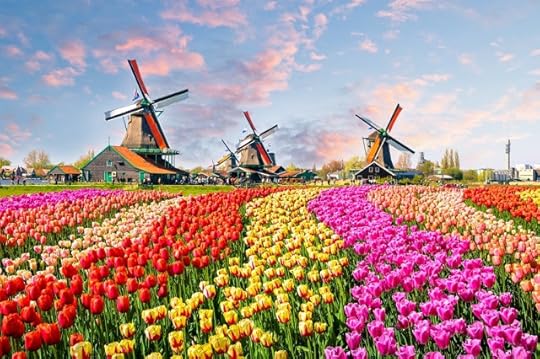


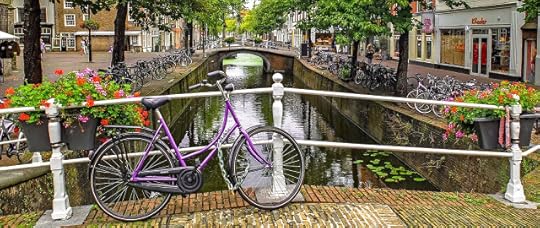
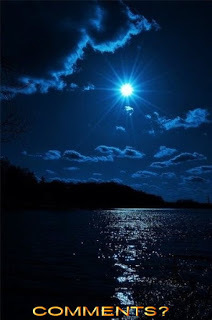
Clancy's comment: Worth visiting, and a great place for photographers.
I'm ...


Published on January 07, 2019 14:06
January 6, 2019
7 January 2019 - LOST ENGLISH WORDS

LOST ENGLISH WORDS
G'day folks,
Time to post some words that have gone by the wayside.
boreism n 1833 -1839 behaviour of a boring person The professor, while brilliant, was afflicted by boreism when lecturing.
boscaresque adj 1734 -1734 picturesque; scenically wooded Despite northern England's industrial pollution, parts of it remain boscaresque.
brabeum n 1675 -1675 reward or prize Without some brabeum, the students will have no incentive to work harder.
brephophagist n 1731 -1875 one who eats babies The character Fat Bastard is a disgustingly obese Scottish brephophagist.
brochity n 1623 -1678 projecting or crooked quality of teeth His parents later regretted that they did not correct his brochity in his youth.
bromography n 1860 -1860 a treatise on food It's not enough to write a bromography - today's celebrity chefs need to be on TV!
bubulcitate v 1623 -1678 to act as a cowherd; to cry like a cowherd When their cat went missing, they were on the street bubulcitating for weeks.
buccellation n 1657 -1731 act of dividing into small morsels The buccellation and apportionment of their rations was the subject of heated argument.
bumposopher n 1834 -1886 one learned in bumps; a phrenologist Craniology has progressed greatly since the days of bumposophers.
cacatory adj 1684 -1753 accompanied by loose bowels For the diners, the effects of the chicken cacciatore, alas, were cacatory.
cacozealous adj 1656 -1696 imitating badly; poorly affected Her cacozealous attempt at mimicking her boss bordered on being offensive.
cagastric adj 1662 -1753 of diseases, originating under an ill star We no longer believe in cagastric causes for illness and deformity.
cameranious adj 1791 -1791 of or relating to a chamber The social gathering benefited from the cozy, cameranious setting.
canitude n 1656 -1742 greyness; hoariness; whiteness The first snowfall of the year gave the field a pleasant canitude.
caprizant adj 1730 -1736 of the pulse, uneven or irregular While he hadn't had a full-blown heart attack, his pulse was very caprizant.
casitive adj 1652 -1652 having grammatical cases The casitive nature of Finnish and Hungarian makes them difficult to learn.
castaldy n 1623 -1800 stewardship His castaldy over the manor was dependent on his good relations with the lord's sons.
cecograph n 1851 -1874 writing device for the blind The development of computers has made the cecograph entirely obsolete.
celeberrimous adj 1768 -1768 very or most highly celebrated Her celeberrimous accomplishments were lauded by her colleagues.
celeripedean adj 1623 -1656 swift-footed The most celeripedean of the Greek deities was Hermes.
cestuan adj 1711 -1711 of or pertaining to a boxer's gloves or cesti No cestuan improvements can negate the damage of such blows to the head.

Clancy's comment: Mm ... Say no more.
I'm ...


Published on January 06, 2019 11:46
January 5, 2019
6 January 2019 - THE COLOURFUL QUETZAL
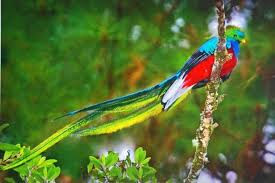
THE COLOURFUL QUETZAL
G'day folks,
I always like to find unusual and rare species. This would be one of them.
The quetzal is a bird that many consider among the world's most beautiful. Vibrantly coloured, they live in the mountainous, tropical forests of Central America where they eat fruit, insects, lizards, and other small creatures.
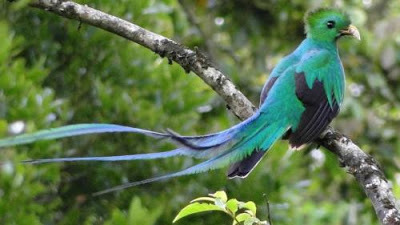
Quick FactsType: BirdDiet: OmnivoreLifespan: Up to 20-25 yearsSize: Body 38 to 40.5cm; tail 61cmWeight: 200 to 225gHabitat: Tropical rainforestsRange: Central AmericaScientific name: Pharomachrus, EuptilotisThe quetzal is a bird that many consider among the world’s most beautiful.During mating season, male quetzals grow twin tail feathers that form an amazing train up to one metre long.Females do not have long trains, but they do share the brilliant blue, green, and red coloring of their mates.Quetzal pairs use their powerful beaks to hollow hole nests in rotted trees or stumps.Young quetzals can fly at about three weeks of age.



Quetzals are also known as Guatemalan quetzals, and the birds are the symbol of that nation.The bird was sacred to the ancient Maya and Aztec peoples, and royalty and priests wore its feathers during ceremonies.These striking birds are threatened in Guatemala and elsewhere throughout their range. They are sometimes trapped for captivity or killed, but their primary threat is the disappearance of their tropical forest homes.In some areas, most notably Costa Rica’s cloud forests, protected lands preserve habitat for the birds and provide opportunities for ecotourists and eager bird watchers from around the globe.
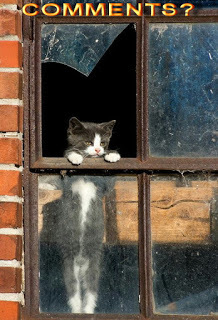
Clancy's comment: Yep, I'd be happy to photograph them.
I'm ...


Published on January 05, 2019 12:01
January 4, 2019
5 January 2019 - FLORENCE NIGHTINGALE
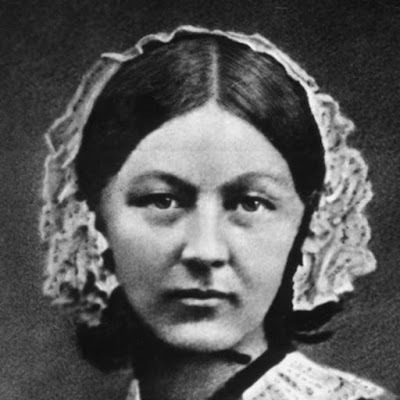
FLORENCE NIGHTINGALE
G'day folks,
Florence Nightingale, OM, RRC, DStJ was an English social reformer and statistician, and the founder of modern nursing. Nightingale came to prominence while serving as a manager and trainer of nurses during the Crimean War, in which she organised care for wounded soldiers.
Florence Nightingale(1820 – 1910) Volunteered to nurse soldiers during the Crimean War. Nightingale’s analysis of mortality rates helped to improve hospital practices. She also helped improve the standard and prestige of the nursing profession. She is considered to be the founder of modern nursing.
Born in 1820 to a wealthy family, Florence was educated at home by her father. She aspired to serve others, in particular, she wanted to become a nurse. Her parents were opposed to her aspirations – at that time, nursing was not seen as an attractive or ‘respectable’ profession. Despite her parents’ disapproval, Florence went ahead and trained to be a nurse. Florence later wrote that she felt suffocated by the vanities and social expectations of her upbringing. On one occasion, sitting in her parent’s garden, she felt a call from God to serve others. She resolved to try and follow God’s will in being of service to others.
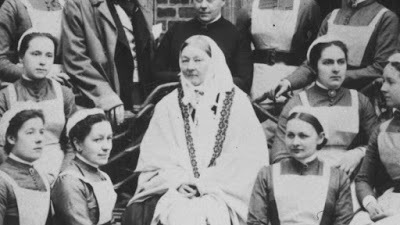
Florence had the opportunity to marry, but she refused a couple of suitors. She felt marriage would enslave her in domestic responsibilities.
In 1853, the Crimea war broke out. This was a bloody conflict leading to many casualties on both sides. Reports of the British casualties were reported in the press; in particular, it was noted that the wounded lacked even the most basic of first aid treatment. Many soldiers were dying unnecessarily. This was a shock to the British public, as it was one of the first wars to be reported vividly in the press back home.
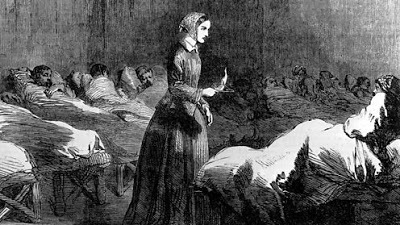
Later in 1855, Florence Nightingale was asked (with the help of her old friend Sydney Herbert) to travel to the Crimea and organise a group of nurses. Many of the initial applicants were unsuitable, and Florence was strict in selecting and training the other nurses. Nightingale was helped in using nurses trained by Elizabeth Fry’sschool of nurses. Nightingale was an admirer of Fry, who amongst other things campaigned for better prison conditions.
Florence was very glad to be able to take up the post and put in to use her training as a nurse. They were based at the staff hospital at Scutari. She was overwhelmed by the primitive and chaotic conditions. There were insufficient beds for the men and conditions were terrible; the place smelt, was dirty, and even had rats running around spreading disease.
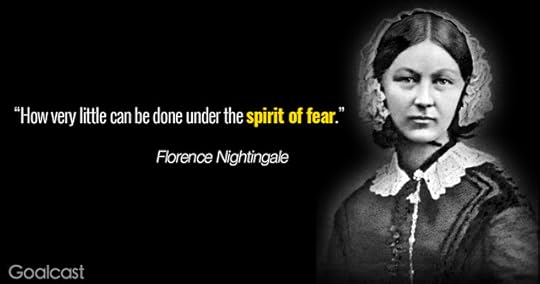
In the beginning, the nurses were not even allowed to treat the dying men; they were only instructed to clean the hospital. But, eventually, the number of casualties became so overwhelming the doctors asked Florence and her team of nurses to help.
A contemporary of Florence Nightingale was Jamaican nurse, Mary Seacole, who worked on her own initiative from a base in Balaclava near the front line.
Florence’s attitude included strict discipline for her other nurses, who always wore a highly visible uniform. The efforts of Florence and her team of nurses were greatly appreciated by the wounded soldiers and gradually positive news reports filtered back home. During her time in the Crimea, she developed a persona as being “The Lady with the Lamp.”
By the time she returned home, she had become a national heroine and was decorated with numerous awards including one from Queen Victoria.
Nightingale was a pioneer in using statistical methods to quantify the effect of different practices. She also had an ability to present dense statistical data in an easy to read format. She made extensive use of pie charts and circular histograms to clarify the essential points.
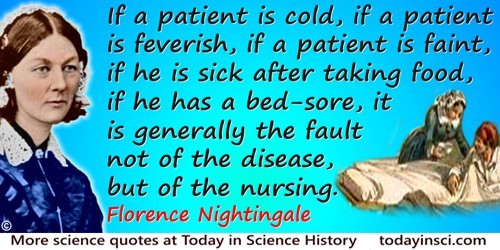
Ironically, she found that some of her own methods of treating soldiers decreased recovery rates. But, this scientific approach to dealing with hospital treatment helped to improve standards and the quality of care.
As well as nursing, Nightingale was concerned with other areas of social reform. This included better health care in Workhouses and schools and reform to the prostitution laws which often victimised female prostitutes. Nightingale was also concerned about the famine in India and made detailed investigations into the standard of sanitation and hygiene in India. Nightingale took a practical approach, endeavouring to improve aspects of life.
Florence Nightingale took an active interest in religious and spiritual issues. She was a member of the Church of England but took a broad ecumenical approach – believing there was truth in different Christian denominations and also Eastern religions. She also wrote on mysticism and the religious practice of seeking divinity from within.

Clancy's comment: I recall reading about her as a young kid. Ah, the 'Lady with the lamp'.
I'm ...

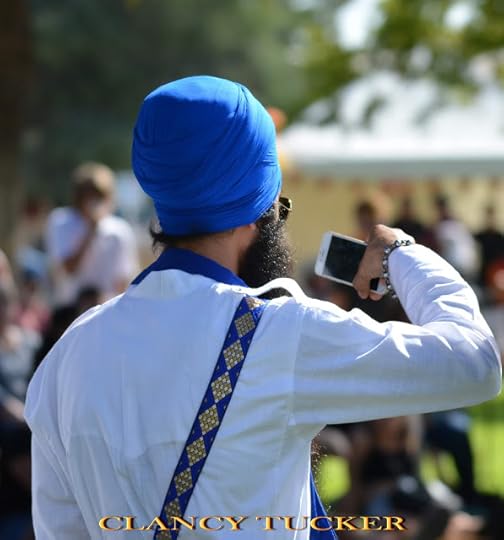
Published on January 04, 2019 12:00
January 3, 2019
4 January 2019 - THE SEWERS OF BARCELONA
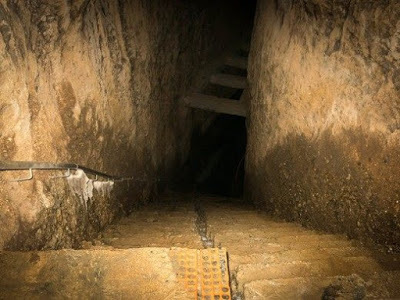
THE SEWERS OF BARCELONA
G'day folks,
Barcelona's historic 19th-century sewers, whose foundations were laid in medieval times, are open to the public for exploring.
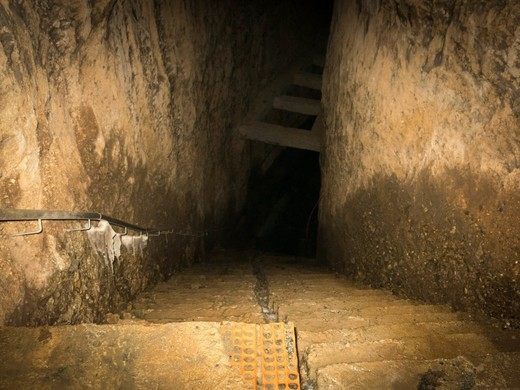
Barcelona is known as the birthplace of Catalan “modernisme”, due to the architectural style pioneered there at the turn of the century. However, exploring below the city’s streets betrays the many layers of architecture in its history.
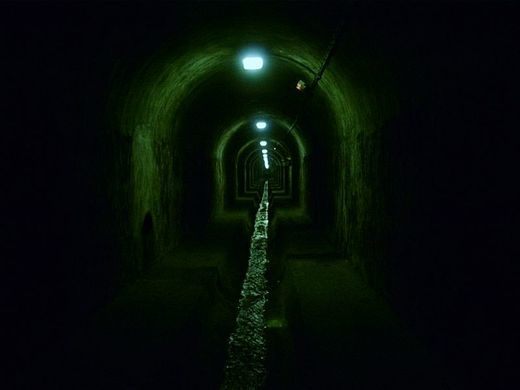
An aqueduct-based sewer system was introduced to Barcino, an ancient Roman colony, because when it rained the whole city would flood. Much later, in 1364 when the city had become known as Barcelona, medieval architects expanded on the sewers and ran water beneath La Rambla, the city’s most famous street.
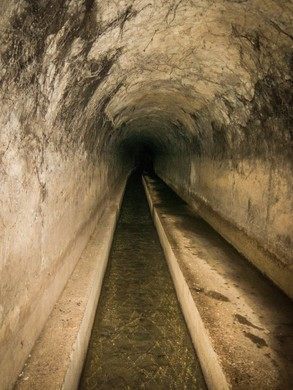
It wasn’t until 1886 that Pere García Faria designed the first modern sewers in the city, intended to serve Eixample, the bourgeois proto-suburb being expanded outside the medieval walls. These, too, expanded on and connected with the sewers of previous eras. Today some of these tunnels are still in use. Most are inaccessible to the public, but thanks to a dedicated group of Barcelonian tour guides, the sewers are open for adventuring.
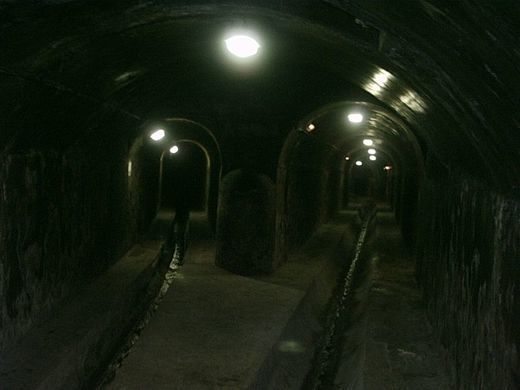
The best remnants are located below Passeig San Joan, a strategic avenue which linked Gracia, a formerly independent village, with Parc de la Ciutadella, the site of the 1888 Universal Exhibition. Beneath these streets a whole world opens up: The quiet flow of water in the dank sewers is illuminated by dim fluorescent lights while the city’s hustle and bustle continues on above.
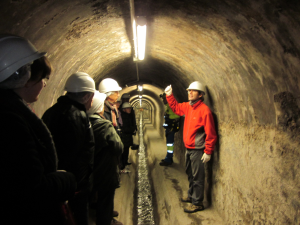
The visits are facilitated by La Fabrica del Sol, an institution responsible for educating the public on Barcelona’s environmental activities. Small groups (no more than ten people) are guided by locals who explain the evolution of the aquatic tunnels, their technical processes and engineering, as well as lore and curiosities.
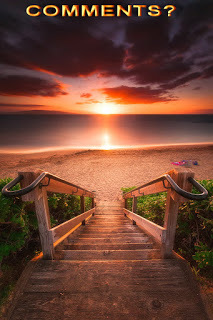
Clancy's Comment: Mm ... Have you booked your ticket for Barcelona?I'm ...


Published on January 03, 2019 12:04
January 2, 2019
3 January 2019 - INSPIRATIONAL QUOTES

INSPIRATIONAL QUOTES
G'day folks,
Let's hope some of these quotes inspire us for the new year ahead.






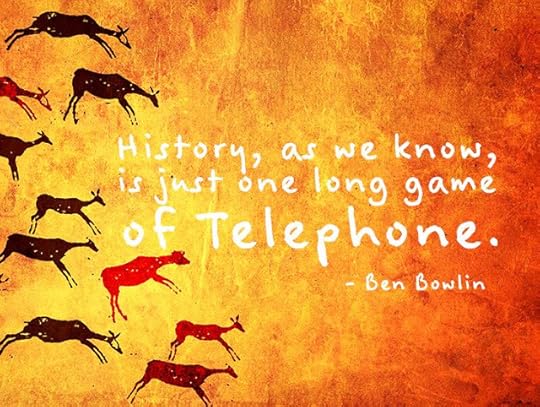
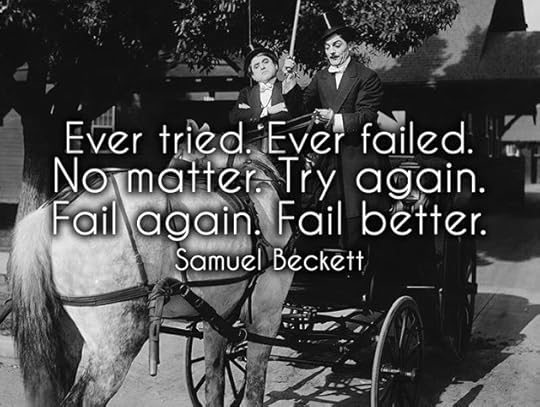


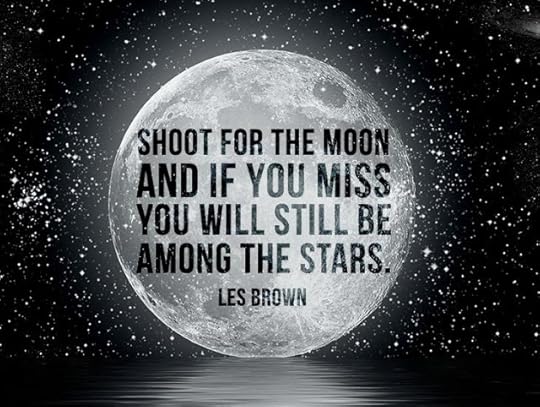

Clancy's comment: If any of these will help someone you know, send this blog onto them.
I'm ...
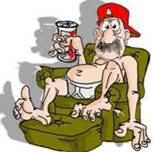

Published on January 02, 2019 11:58
January 1, 2019
2 January 2019 - WEIRD AND WACKY STUFF
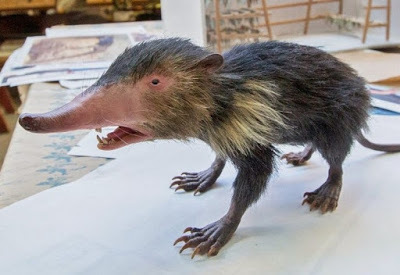
WEIRD AND WACKY STUFF
G'day folks,
Welcome to some weird examples of nature.
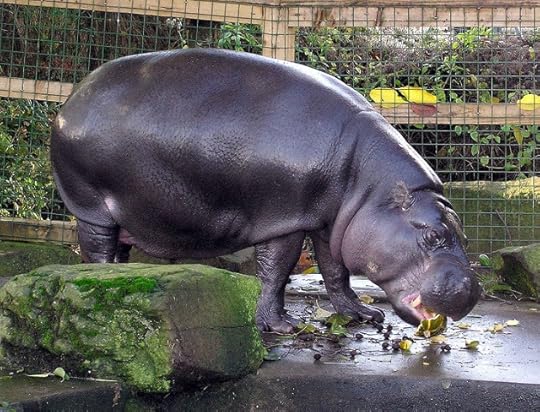
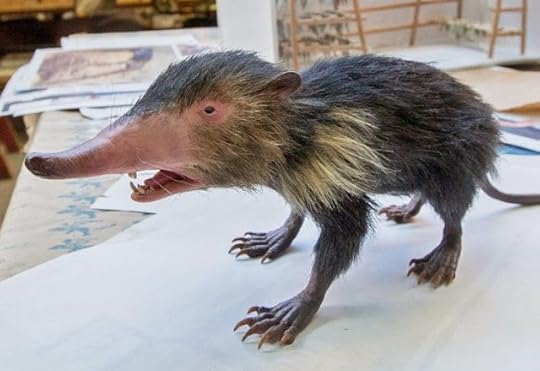









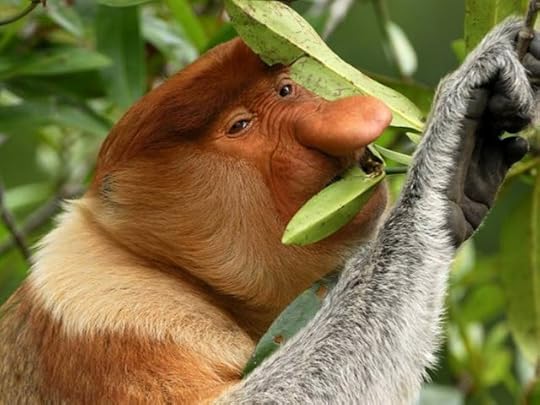

Clancy's comment: Wow. Extraordinary, eh?I'm ...
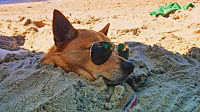

Published on January 01, 2019 11:41



